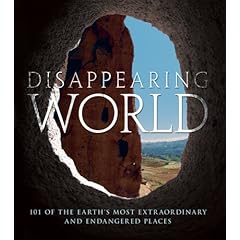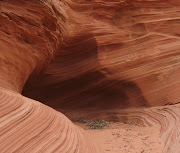Spread throughout 185 countries are 851 sites (660 cultural, 166 natural, and 25 mixed properties)
 holding significance to the world community with an United Nations Educational, Scientific and Cultural Organization or UNESCO designation as a World Heritage Site. Headquartered in the cultural enrichment treasure trove of Paris, France on Place de Fontenoy under the stewardship of Japan's Kōichirō Matsurra since 1999, UNESCO is responsible for oversight of 58 field offices, plus a glittering array of strategic partnerships with institutes and cultural centers sprinkled around the globe. (Cueva de las Manos in Argentina, Persepolis in Iran, Pyramid Kheops in Egypt, Shinto Itsukushima Shrine Japan sites)
holding significance to the world community with an United Nations Educational, Scientific and Cultural Organization or UNESCO designation as a World Heritage Site. Headquartered in the cultural enrichment treasure trove of Paris, France on Place de Fontenoy under the stewardship of Japan's Kōichirō Matsurra since 1999, UNESCO is responsible for oversight of 58 field offices, plus a glittering array of strategic partnerships with institutes and cultural centers sprinkled around the globe. (Cueva de las Manos in Argentina, Persepolis in Iran, Pyramid Kheops in Egypt, Shinto Itsukushima Shrine Japan sites)Acquiring UNESCO's seal is an arduous process that takes years of dedication and diplomacy plus a tremendous case put before multiple rounds of votes from 193 member states and 6 associate members. After accusing UNESCO of being a proxy for the developing world against first world prosperous nations, the US rejoined in 2003. Singapore and the United Kingdom returned as well.
In Russia's bone snapping cold Siberia, the world's largest 25 million year old lake with more freshwater than all of North America's Great Lakes combined is being affected by rising water temperatures. Disturbing results
 comprising a study based on 60 years of analysis from three generations of Russian scientist and present day American translators and scientists featured in the journal Global Change Biology. Those are serious natural impediments to maintaining the unspoiled biodiversity Lake Baikal is famous for having in an undeveloped area of the world. Lake Baikal earned the votes to become a UNESCO World Heritage Site in 1996 with exceptional natural features like Shaman Rock. (photo Nicholas Rodenhouse)
comprising a study based on 60 years of analysis from three generations of Russian scientist and present day American translators and scientists featured in the journal Global Change Biology. Those are serious natural impediments to maintaining the unspoiled biodiversity Lake Baikal is famous for having in an undeveloped area of the world. Lake Baikal earned the votes to become a UNESCO World Heritage Site in 1996 with exceptional natural features like Shaman Rock. (photo Nicholas Rodenhouse)Lake Baikal, situated in a remote area of Siberia, had been thought to be one of theAlong the Curonian split on a small peninsula in Kaliningrad, Russia, tourism is sought at a site known for pristine beaches and a haven for avid bird watchers. Governors are rubbing their hands in glee at the vision of a million tourists a year invading the area bringing untold caches of rubles to but a few and unthinkable incremental destruction to what made it a WHS first. In irony worthy of scalding derision the government promises to use the money on environmental projects.most resistant lakes to climate change but a new study has found "significant" warming of surface temperatures.
Changes to the lake are important to monitor as it is home to 2,500 plant and animal species, with most found nowhere else in the world.
"Increases… have important implications for nutrient cycling and food web dynamics," the scientists warn.

 Fire is a constant worry as evidenced by Spain and Italy's recent April spate of WHS sites facing fiery embers, ash, smoke or destruction. Armed with fixed wing aircraft and water carrying helicopters, Spanish firefighters are defending Garajonay National Park on the Canary Island of La Gomera. Strong winds have pushed the raging fire to destroy almost 1800 acres or 700 hectares of farmland and forests. One of the last island forests in Europe with magestic evergreen specimens of laurel leaved trees, many over 40 meters, teeming with bats lizards, frogs and endemic pigeons earned UNESCO's approval as a WHS.
Fire is a constant worry as evidenced by Spain and Italy's recent April spate of WHS sites facing fiery embers, ash, smoke or destruction. Armed with fixed wing aircraft and water carrying helicopters, Spanish firefighters are defending Garajonay National Park on the Canary Island of La Gomera. Strong winds have pushed the raging fire to destroy almost 1800 acres or 700 hectares of farmland and forests. One of the last island forests in Europe with magestic evergreen specimens of laurel leaved trees, many over 40 meters, teeming with bats lizards, frogs and endemic pigeons earned UNESCO's approval as a WHS. 
 On the list since 1997 as a main family residence and a core part of the Royal House of Savoy, Castello di Moncalieri, in Piedmont, a fire burned several royal apartments filled with priceless artifacts and a fair number of floors in the watch tower. A crisped castle built in 1100 and a destroyed armory are deeply regretted losses by the head of UNESCO on the 4th and 7th of April. Canadians gasped in horror as one of their beloved WHS structures, Voltiguers de Québéc, became engulfed in flames. Québéc City's famed drill hall and armory, built in 1887, received its heritage designation almost century later in 1985. Canadian firefighters and the sites archivists were able to save the majority of the buildings treasures. (Reuters photo of Quebec fire)
On the list since 1997 as a main family residence and a core part of the Royal House of Savoy, Castello di Moncalieri, in Piedmont, a fire burned several royal apartments filled with priceless artifacts and a fair number of floors in the watch tower. A crisped castle built in 1100 and a destroyed armory are deeply regretted losses by the head of UNESCO on the 4th and 7th of April. Canadians gasped in horror as one of their beloved WHS structures, Voltiguers de Québéc, became engulfed in flames. Québéc City's famed drill hall and armory, built in 1887, received its heritage designation almost century later in 1985. Canadian firefighters and the sites archivists were able to save the majority of the buildings treasures. (Reuters photo of Quebec fire)After a united world begged to stop it, one of the biggest crimes against a UNESCO site was the malevolent Taliban's detonation of a bomb blowing up the world's two biggest 5th century Buddhas in Bamyan Afghanistan. Today, near the precious remnants of the stone figures, more explosions cracked the remain of the Bhuddas. These over 100 foot Buddhas sat along the Silk Road until international wanted terrorist Mullah Omar ordered their destruction via dynamite.
The two statues, chiseled about 400 yards apart into a cliff face also teeming with ancient cave shrines and paintings, were created when Bamiyan was a major center for Buddhism. The
Taliban dynamited the Buddhas in March 2001, deeming them idolatrous and anti-Muslim. It was one of the regime's most widely condemned acts.
Brendan J. Cassar, chief of UNESCO's cultural program in Afghanistan, which includes conservation of the World Heritage Site at Bamiyan, said the agency had yet to establish if the blast caused damage. But he expressed concern.
"We were not informed about the explosion," he said in Kabul. "This is something we should be consulted on."
 Nelson Mandela spent 27 years locked up as an ANC rebel in maximum security prison Robben Island.
Nelson Mandela spent 27 years locked up as an ANC rebel in maximum security prison Robben Island. Many tourists to South Africa make the trek to see where an imprisoned African man spent his time practicing the arts of forgiveness for the abomination of apartheid to maintain white rule. From atop Tabletop Mountain, the island is clearly visible. His tr
Many tourists to South Africa make the trek to see where an imprisoned African man spent his time practicing the arts of forgiveness for the abomination of apartheid to maintain white rule. From atop Tabletop Mountain, the island is clearly visible. His tr iumph to become the internationally revered 11th president of South Africa on 2 May, 1994, forgiving malicious captors and petty presidents alike, earned him a Nobel Peace Prize forged in the hard labor of Robben Island. A former leper colony as well, Robbens Island and its museum list as a cultural WHS site, a testament to Nelson Mandela and human endurance, has now fallen into a state of disrepair where the animals are starving amidst a rabbit infestation and the buildings crumbling.
iumph to become the internationally revered 11th president of South Africa on 2 May, 1994, forgiving malicious captors and petty presidents alike, earned him a Nobel Peace Prize forged in the hard labor of Robben Island. A former leper colony as well, Robbens Island and its museum list as a cultural WHS site, a testament to Nelson Mandela and human endurance, has now fallen into a state of disrepair where the animals are starving amidst a rabbit infestation and the buildings crumbling.A tour of the sites just by their images make my heart ache for what is lost or we are in great peril of losing through fire, poor management and neglect. It is our history and the world's legacy showcasing the unique and the Utopian about human endeavor. Disappearing World: 101 of the Earth's Most extraordinary and Endangerd Places by Alonzo C. Addison is an exceptional tour of some of the sites in the book released 8 weeks ago.

















No comments:
Post a Comment